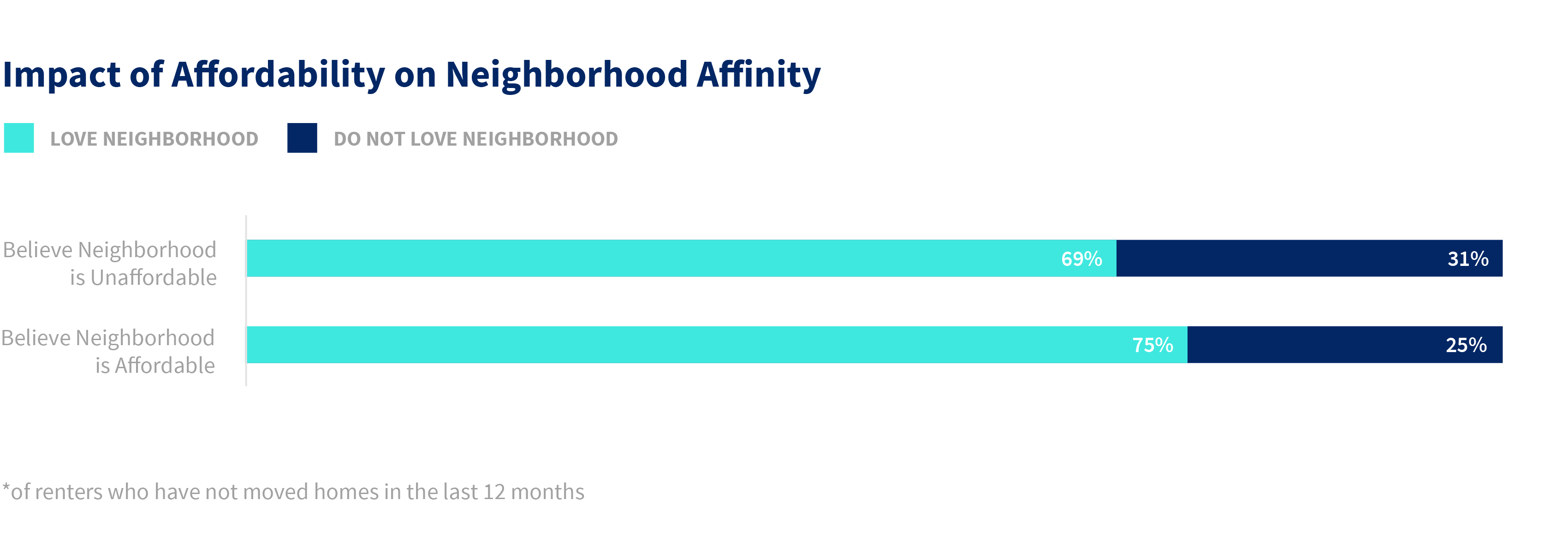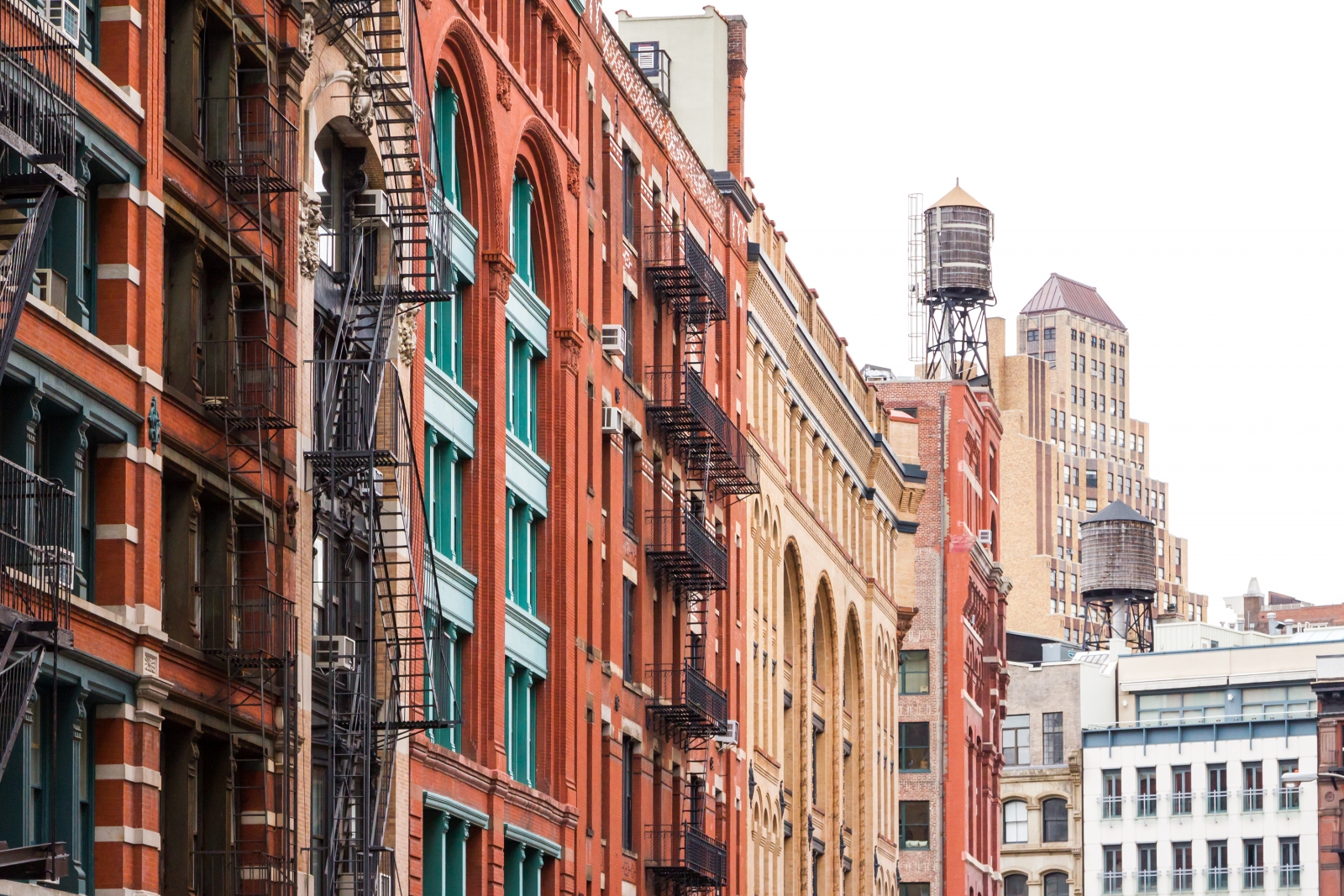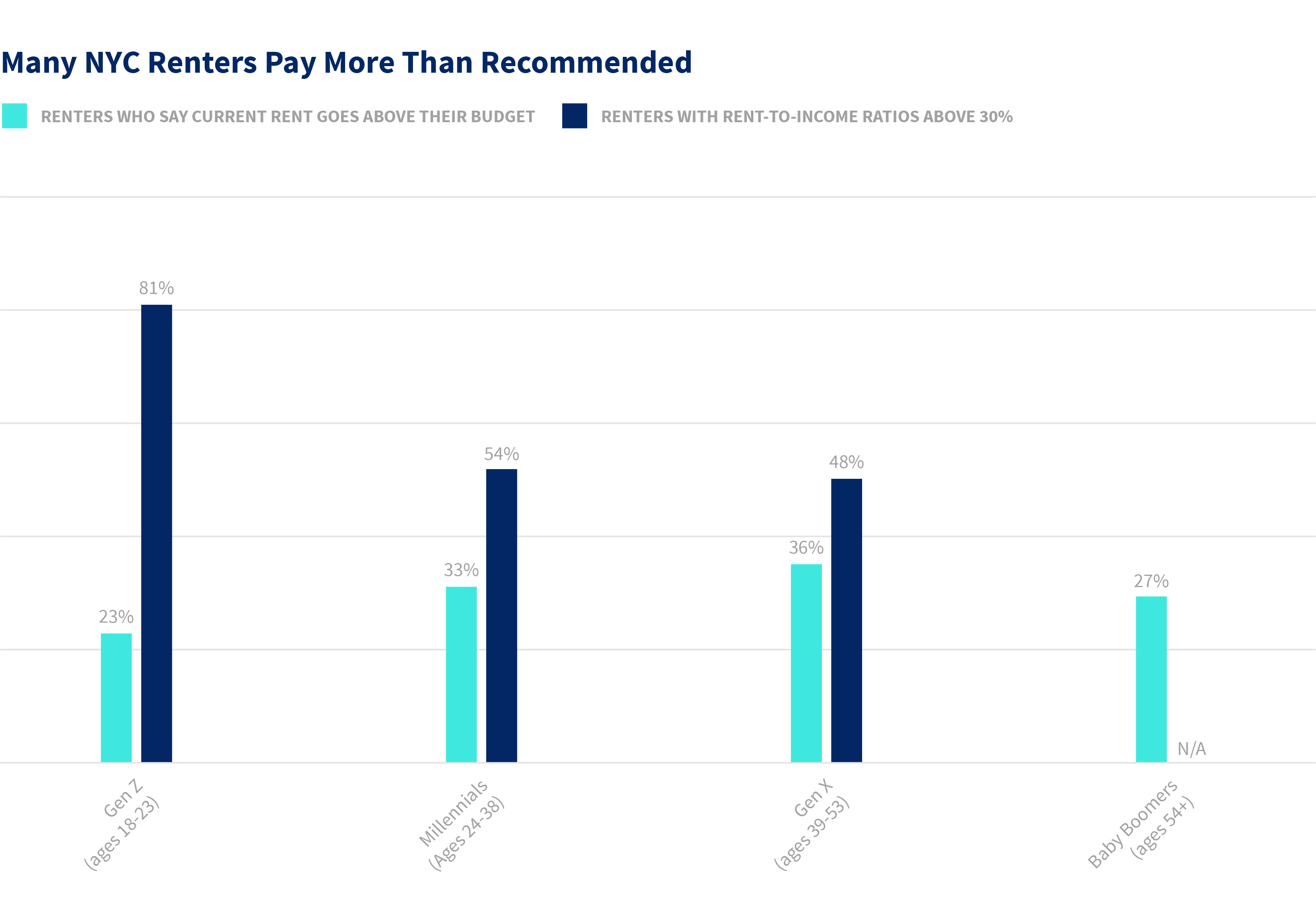Surveying New York
Living in New York City as a renter often means paying for pricey apartments, facing rising rents and living in small spaces. And yet, according to StreetEasy’s latest survey, most New Yorkers love the city and have no plans to leave. Despite viewing the city and their neighborhood as unaffordable, 3 in 4 still love their neighborhood, and 2 in 3 have no plans to move to another city.
To better understand the affordability challenges that New Yorkers face and the factors that drive their decisions when searching for a home, StreetEasy surveyed 2,550 residents across all five boroughs about their experiences in the city, their home and community priorities, and their struggles.
Many New Yorkers Stretch to Pay the Rent
Renters may love where they live, but many stretch their budget to pay for their apartments.
While 1 in 3 New Yorkers (32 percent) say they pay above their initial budget for their apartment, half spend more than the recommended 30 percent of their income on rent. For these New Yorkers, putting 30 percent of their income toward rent may not enable them to live in the homes or neighborhoods they want. But it also means that these renters have less income for saving, investing, paying off debts, starting a family, traveling, or simply enjoying life in the city. This gap between perceived budget and recommended spending levels is more prominent for members of Generation Z and millennials, who may not have had the same time and opportunities to build their incomes as older generations.
Rent Increases Drive Some New Yorkers to Move and Prevent Others From Moving
Rent increases may be one reason many New Yorkers spend more than the recommended 30 percent of income on rent. On top of paying some of the highest rents in the country, most New Yorkers experience a rent increase.
In a city where rents are among the highest in the country, it’s not surprising that most renters experience a rent increase. Almost 9 in 10 (87 percent) renters experienced a rent increase with a median of $250, which motivated 59 percent of them to move. Of all New Yorkers, Manhattan dwellers were most frequently driven to move by a rent increase, with 39 percent responding that one drove them to move to a great extent. Brooklynites were least impacted by a rent increase, at 12 percent.
Mobility is tied to many factors, including age, employment, education, income, and tenure in an apartment. New Yorkers who moved in the past 12 months have a higher median income ($62,500) than renters who have not moved recently ($37,500), which suggests that renters who earn more have more flexibility to change their housing situation. Those who were most motivated to move by a rent increase are millennials (47 percent), employed renters (75 percent), college graduates (69 percent), and those who had lived in their current home for five or more years (61 percent).
However, in New York, finding an apartment whose cost savings offset both the initial rent increase and the cost of moving can be difficult. So while rent increases motivated some New Yorkers to move, almost half (49 percent) chose to stay, because they could not afford to move elsewhere (47 percent) or think they currently have a good deal (55 percent).
Among renters who do not plan to move due to a rent increase, most have no college background (66 percent), are not employed (64 percent), are single (70 percent), or make below $37,500 (70 percent). These renters stay and pay the higher rent, and most (3 in 4) even find their homes to be affordable despite viewing their neighborhood (40 percent) and New York City (74 percent) as unaffordable. Moreover, the share of renters who find their homes affordable despite finding the city unaffordable does not vary with household income.
Renters face many affordability challenges in New York City. Almost 40 percent say they would not be able to accommodate an unexpected $1,000 expense. At the same time, 76 percent of New York renters still report finding their homes affordable. And whether or not renters find their homes, neighborhoods, or New York City to be affordable does not greatly impact how much they love their community: 69 percent of renters who think their neighborhood is unaffordable love their neighborhood, compared to 75 percent who think their neighborhood is affordable.
Many New Yorkers see paying rent as a hurdle to be overcome. Seeing the high rents on the market, facing price increases, and dealing with the costs of moving all contribute to the common perception that the city is an impossibly pricey place to live. Yet the vast majority of these renters still think they found an affordable home — and love their city and neighborhood.

How We Did It
StreetEasy partnered with independent market research firm YouGov to conduct a representative survey that was fielded online in May and June 2018. The survey gathered information from 2,550 residents in all five boroughs. Data was collected through a general market sampling of recent renters who rented in the past 12 months; inactive renters who are currently renting and did not move in the past 12 months; buyers and sellers who bought and sold in NYC in the past 12 months; and homeowners who currently own and did not move in the past 12 months. Quotas based on the U.S. census were set for age, gender, and education. The data was then weighted to known U.S. census estimates on age, gender, race and education, to ensure that respondents were representative of the New York City population. The results then underwent substantial internal analysis and review by researchers and economists at Zillow Group and StreetEasy.
—
Hey, why not like StreetEasy on Facebook and follow @streeteasy on Instagram?












